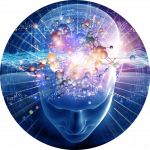We are all subject to the butterflies of first love and to the physical pain when a relationship fails. We know what it feels like to hold our new born child, or even our cat. Those feelings are part of love. Thanks to ever-improving technology, scientists are able to look inside the human brain to find answers to some of the oldest questions about the human condition. Scientists can now pinpoint the neurochemicals that form the very foundations of love and sexual attraction.
Evolution has enabled women to get pregnant and raise children in the same way it has made made protect, provide and commit to their family. As humanity continued to evolve, our brains used out senses to take in key indicators. A woman’s waist-to-hip ratio, for example, is one of the most robust indicators of health and fertility, and cross-cultural studies of female body shape have repeatedly shown that the most attractive waist-to-hip ratio is 0.7 — the classic hourglass. This might seem surprising because of the focus on thinness — at least in the West.
But remember it is the ratio of waist to hips that’s key, so you can be a size 8 or 18 and the 0.7 is still of paramount importance. In a 2015 eye-tracking experiment, scientists in Texas showed that both men and (perhaps surprisingly) women focused first and spent the longest time looking at unknown women’s midriff before her face. This suggests that when deciding to approach a potential mate, the waist-to-hip ratio is one of the first pieces of information to be processed.
Meanwhile, men are assessed on their shoulder-to-waist ratio where a score of 1.4 is the goal. In the case of casual relationships however, women are more likely to go for good looks in the form of a symmetrical face. In fact for both sexes, symmetry is a sign of good genes.
However… the sexiest organ in the human body is arguably the brain. The use of creative language, artistic expression and humour are indicators of cognitive flexibility, something we all want our offspring to inherit because it’s linked to intelligence. It’s for this reason, at least in part, that successful, wealthy, famous or powerful men seem to have above- average reproductive success. Women seem to find them irresistible despite the fact they generally don’t stick with one mate.
So are women more romantic that men?
If you were to place an equal number of men and women in an fMRI scanner and show them a series of pictures of people in love — the classic couple holding hands at sunset or carrying out the weekly supermarket shop — would the scans tell us anything about men and women’s approaches to love? Interestingly, regardless of sex, the more romantic the scenario, in both men and women, the more the centres of the brain that handle emotions lit up. Even so, there are differences.
Areas of the brain engaged in thinking (rather than feeling) are more active in men. This suggests that evaluating and considering romantic scenarios is a more important process in men than it is in women who appear to be more instinctive. Thus it might seem that men are less emotional than women. The burning questions is, is this difference because of evolution? The fact is, the human brain is highly malleable. It can change, particularly in our early years, and our environment plays a key role this.
It might be that our culture — boys are the rational sex while women are more subject to their emotions — has caused our brains to think like this. Other studies have shown that by the a eight, boys and girls begin to conceptualise romantic love in different ways. This is why pink is for girls, blue is for boys, and why girls like dolls and boys like train sets.
Oxytocin, dopamine, serotonin and beta-endorphin — the happy chemicals that influence brain activity — are hormones that can influence romance. Beta-endorphin is perhaps the most important because it a natural opiate, just like heroin or morphine. Once someone has experienced the release of it, they will want more, and this leads to our addiction to the pleasurable and wonderful feelings of warmth, closeness and happiness that it creates.When we interact with someone we love, we get a hit of opiate. When we are apart, levels drop and we become subject to cravings, causing us to become motivated to return to the source, and a cycle develops of constantly being drawn back to the relationship.
If this reminds you of drug addiction, then you would be right, because the downside is that if the relationship is cancelled, just like the drug addict, we start to experience withdrawal symptoms, which is why losing love is such a psychologically — and also physically — painful experience.
Successful dating is depending on endorphin-inducing activity, especially if the romance involves thrills and laughter. Going to a comedy club is more likely to cause object of your desire to fall for you more than say, an invitation to a football match. However, breaking up can lead to bouts of stress and anxiety, even depression.
Awareness of this aspect of the human condition will help you to understand and cope with relationships that are both successful and toxic.

